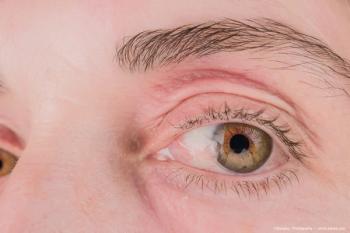
Complement molecules may lead to early AMD detection
Lexington, KY-Animal studies point to two components of drusen as the driving force for the neovascularization that causes age-related macular degeneration (AMD) -a discovery that opens the way to early detection and drug therapy to prevent the condition, said Jayakrishna Ambati, MD.
The road to discovery started with the knowledge that the earliest clinical indicator of AMD is the presence of drusen beneath the retinal pigment epithelium, said Dr. Ambati, associate professor and vice chairman of ophthalmology and visual sciences at the University of Kentucky, Lexington.
"One of the fundamental questions in this field is what leads to choroidal neovascularization (CNV)," he said. "We found that one important cause may be complement activation."
Dr. Ambati's work points to two complement components, designated C3a and C5a.
"Both in patients with AMD and in a recently described mouse model of AMD, early subretinal pigment epithelium deposition of C3 and C5 occurs, suggesting a contributing role for these inflammatory proteins in the development of AMD," wrote Dr. Ambati in a paper from the Proceedings of the National Academy of Sciences (PNAS).
That paper went on to describe the evidence pointing to the fragments of those complement molecules, C3a and C5a, as causing AMD. Both are produced early in the course of CNV that is induced by laser exposure, and both induce expression of the angiogenic molecule, vascular endothelial growth factor. When receptors for the two fragments are blocked by antibodies or pharmacologic agents, CNV is reduced.
"Collectively, these findings establish a mechanistic basis for the clinical observation that drusen predispose to CNV, revealing a role for immunologic phenomena in angiogenesis," the PNAS report said.
"There are two important consequences of these findings," Dr. Ambati said. "First, now we have actual biomarkers for development of AMD. If we can find a way of sampling appropriate areas in patients, we can have an early warning sign. We now are trying to do this with patients."
Perhaps more important is that "now we have a new target that is potentially useful in prophylaxis," Dr. Ambati said. "These molecules are targets for pharmacologic intervention."
The monkey models
The first steps toward that goal are being taken, he said. "We are testing two drugs in monkey models of AMD, as a precursor to going into clinical trials," Dr. Ambati said. He declined to describe them further, except to say that both drugs are administered as intravitreous injections.
"We will be doing phase I trials [this fall], and next year we plan to conduct clinical trials," Dr. Ambati said. If all goes well, one or another of the medications being tested could be ready for widespread use by 2008 or 2009, he said.
Newsletter
Don’t miss out—get Ophthalmology Times updates on the latest clinical advancements and expert interviews, straight to your inbox.













































.png)


